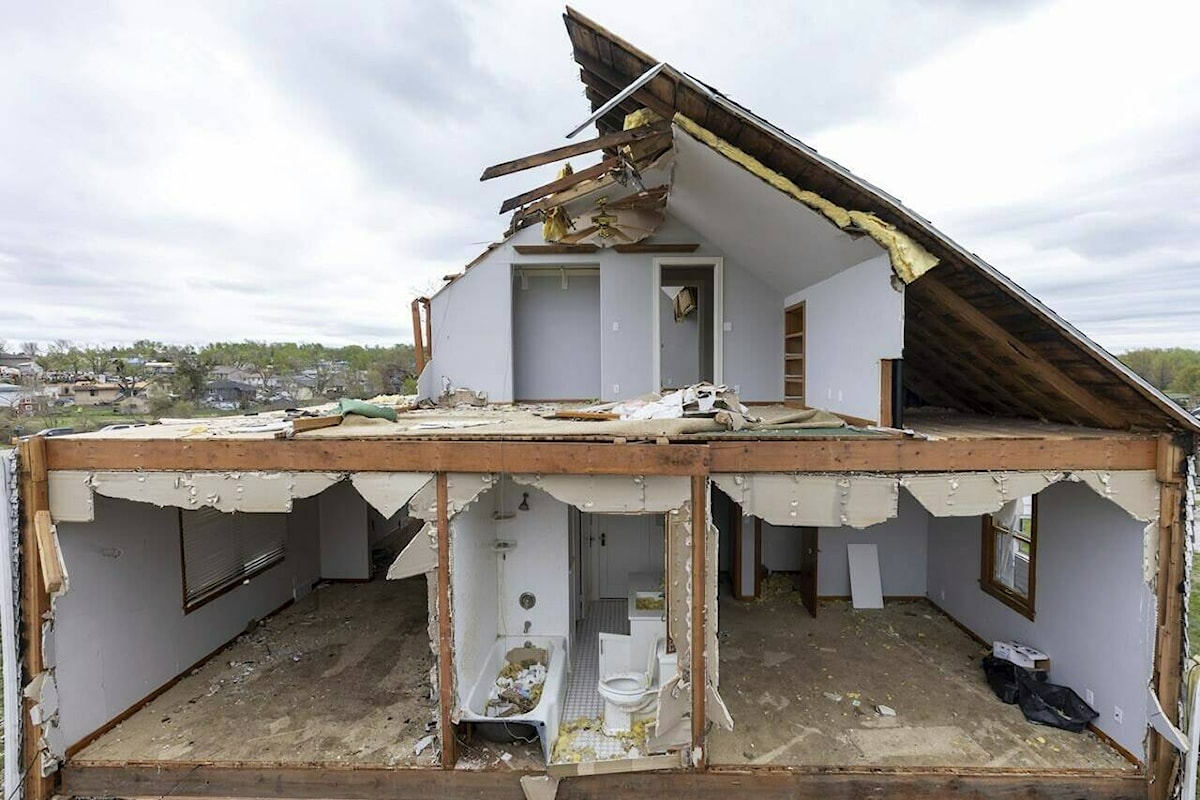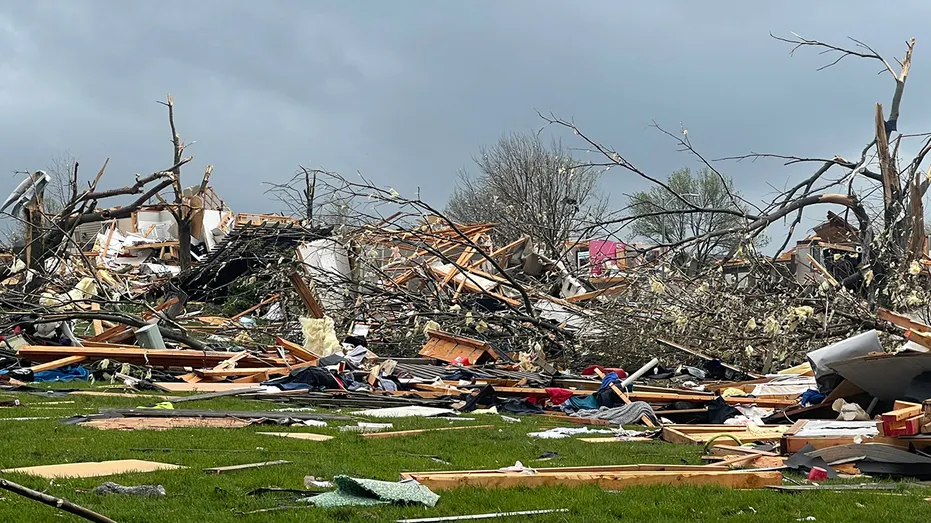A tornado wreaked havoc in a small northeast Oklahoma city, leaving destruction in its wake as it tore through homes, toppled trees, and brought down power lines. The twister struck Barnsdall, a community of around 1,000 people, located approximately 40 minutes north of Tulsa, on Monday night. Reports emerged of significant damage to properties and infrastructure, exacerbating the challenges faced by residents already grappling with the aftermath of severe storms.

Impact on Bartlesville and Barnsdall
Barnsdall and the nearby city of Bartlesville bore the brunt of the tornado’s fury, with reports indicating that both communities suffered substantial damage. The Hampton Inn in Bartlesville sustained severe structural damage, including the loss of its roof, although initial reports suggested that occupants escaped unharmed. Bartlesville’s emergency management team urged residents to avoid the affected areas to facilitate emergency response efforts amid traffic congestion.
Assessment of Damage and Rescue Operations
Law enforcement officers and residents assessed the extensive damage inflicted by the tornado in Barnsdall, where entire neighborhoods bore the brunt of the storm’s destructive force. The Oklahoma Highway Patrol reported damage to 30 to 40 homes, alongside reports of a damaged nursing home necessitating patient evacuation. Rescue operations faced significant challenges due to downed power lines, potential gas leaks, and debris obstructing access to affected areas.
Injuries and Power Outages
Reports from Osage County Emergency Management cited numerous injuries and widespread damage in Barnsdall, with fears that many residents may be trapped in their homes. The disruption caused by the tornado extended beyond physical damage, with approximately 17,000 homes and businesses left without power in Oklahoma. Search and rescue efforts were initiated at the Osage Nation Reservation, underscoring the magnitude of the disaster’s impact.
Meteorological Warning and Continued Threat
The National Weather Service had issued warnings of a “large and life-threatening tornado” heading towards Barnsdall, emphasizing the imminent danger posed by the severe weather event. Despite the lack of immediate information regarding the tornado’s scale and trajectory, meteorologists underscored the severity of the situation. The storms, characterized by intense winds and hail, persisted throughout the evening, exacerbating the threat to affected areas.
High-Risk Weather Warning and Regional Impact
Oklahoma and Kansas were placed under a high-risk weather warning, indicating the severity and scope of the impending storms. Bill Bunting, deputy director of the Storm Prediction Center, emphasized the rarity of such warnings, highlighting the unprecedented threat posed by the extreme weather conditions. The convergence of factors, including strong winds and moisture influx, heightened the risk of tornadoes across a vast swath of the central United States.

Communities Reeling from Natural Disaster
As communities across northeast Oklahoma grapple with the aftermath of the tornado, the resilience and solidarity of residents are put to the test. Emergency responders work tirelessly to assess the damage, provide assistance to those in need, and restore essential services. The catastrophic event serves as a stark reminder of the unpredictable and destructive power of nature, underscoring the importance of preparedness and response measures in mitigating the impact of such disasters.
